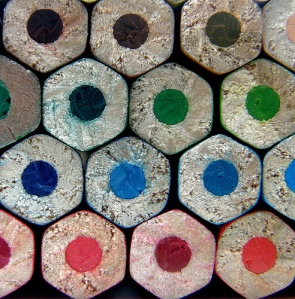Welcome to Part II of my OAIS Reference Model crash course! By now you probably have noticed that I have refrained from including in this post any of the many graphed images that are in the OAIS reference model document. This is because before I had a basic understanding of the model, these images seemed supremely complicated and confusing…kind of like Power Point slides with too many words. I hope that what I provide here is a substantial enough understanding of the OAIS model to make the images less frightening when you do eventually encounter them.
Model Roles:
To start, it is important to recognize the three types of people that will be affiliated with a repository within the OAIS framework: the Producers of the repository’s content, the Managers of the content and repository, and the Consumers who use the content stored in the repository. Each phase of the preservation process effects these three roles. The ingest, the processing and storage, and the accessing of digital objects
The Model in Brief:
The document for the OAIS reference model has several key areas of content:
- Terminology: An awesome vocabulary and glossary for the operations and information structures of repositories is located in Section 1.
- Mandatory responsibilities: A list of the things that a repository must do in order be considered an OAIS-type repository comprises Section 3. One particular action that this section calls for is identifying a designated producer/consumer community and ensuring that the information within the repository (metadata, etc), should be independently understandable (and accessible) by this community. This means that “the community should be able to understand the information without needing the assistance of the experts who produced the information.” Read this for more detail about the other mandatory responsibilities.
- A model for ingesting, storing, and providing access to stored items, including a very smart model for capturing each item’s metadata (Content Information) and preservation metadata (Preservation Description Information). Together, this data is discussed as an item’s “packaging information.” It is intended to include information about an item’s context in order to fulfill one of an OAIS-type repository’s mandatory responsibilities. This is all discussed in Section 2.
- An outline for administrative management of the repository and the OAIS functions is presented in Section 4. This discusses working with the creators of the digital objects and the objectives behind the day-to-day mangement of the repository. The administrative role also oversees the general planning and governance of the repositories, and include policy and preservation decisions.
- Actual preservation methods: Preservation processes such as digital migration and emulation are examined in Section 5. Preservation Planning is obviously a central part of any repository’s role.
- Archive and repository interoperability: concepts behind repository interoperability and federation are discussed and explained in Section 6. Heavy cooperation between repositories to develop common local standards in order to make this a possibility.
By following the OAIS model and the mandatory responsibilities which it entails, a repository will gain recognition as an OAIS-type archive or repository. It is beneficial for a repository to be recognized as such because it means that the well-documented archival standards of the OAIS model will have been applied to help ensure the effective long-term storage, retrieval, and preservation of digital documents. Another benefit is that communication with similarly-purposed OAIS repositories will be easy and fluid.
OAIS in Action:
DSpace and Fedora are two repository software platforms that have included OAIS-compliance capabilities in their product. This helps pave the road for any repository that is built using either of these open source systems to follow procedures from the OAIS model.
What I would love to find or collect is a list of actual digital archives and repositories that are following the OAIS model either by the book or in some variation. If anyone has a suggestion, please post a comment!

